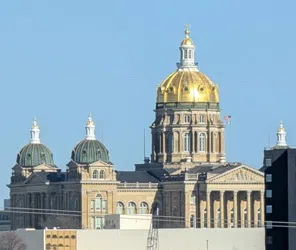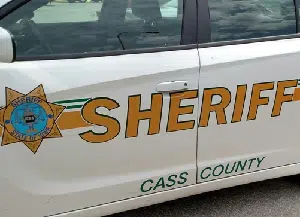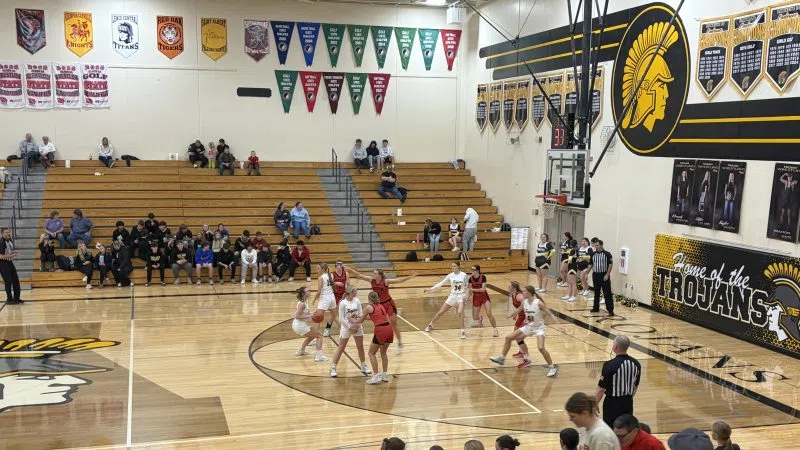(Des Moines) Iowa K-12 public schools would receive a 2% increase in state per-pupil funding next year under legislation the Iowa Senate approved Monday on 32-15 vote.
Senate File 167 sets the State Supplemental Aid (SSA) rate for the upcoming fiscal year. SSA is the growth rate for public K-12 school funding, allocated to schools on a per-pupil basis.
The Senate, and Gov. Kim Reynolds, had put forward the 2% SSA rate. But in February, the Iowa House returned the legislation to the Senate after increasing the SSA rate from 2% to 2.25%. The House amendment also added other funding components like a $10 increase to the state cost per pupil, changes to transportation equity aid payment and weighting for school districts with shared operational costs, as well as a one-time allocation of $22.6 million to help school districts with rising costs and the impacts of inflation.
Since the House vote Feb. 18, the measure did not seen public discussion again before Monday, April 7. Lawmakers had already failed to meet their self-imposed deadline to pass school funding within 30 days of the governor’s budget release, in addition to failing to pass the measure before school districts’ budget proposals were due in early March. However, there are still a few weeks before the school districts’ final budgets must be submitted to the state by April 30.
House Speaker Pat Grassley told reporters in several news conferences that House Republicans were committed to providing some additional funding supports for Iowa K-12 schools, components that were part of the hold-up in passing this year’s SSA rate.
“We understand that we may not get all of those things that we include in our bill, but we’d be hopeful that there’d be at least some consideration,” Grassley told reporters in late March. “Whether it’s operational sharing, whether it’s some one-time, inflationary factors — we continue to be hopeful that at some point in time enough Iowans engaging in this conversation will at least put some of those things on the table.”
The gridlock ended Monday as Senate Republicans returned with an amendment that set the SSA rate at 2%, but included some components of the House amendment. The $22.6 million appropriation was removed, and the proposed raise to the state cost per pupil was lowered from $10 to $5. While the House language gave a standing unlimited appropriation for transportation equity aid payment beginning in fiscal year 2026 to make sure the statewide adjusted transportation cost per pupil was not lower than the statewide average cost, the Senate language set a 5% rate for payments to the transportation equity fund per pupil.
Sen. Lynn Evans, R-Aurelia, said that with the amendment, the spending package represents a $238.1 million increase for K-12 schools compared to FY 2025. Of that increase, $126.8 million will go to public schools, $96.8 million to the state’s Education Savings Account (ESA) program, providing public funds for private school costs, and $14.5 million for charter schools.
Evans said that the proposal provides “responsible and sustainable funding for local school districts.” He emphasized that Republicans have steadily increased school funding in Iowa, and that K-12 spending will make up 44.7% of the state’s budget in FY 2026 at $4.2 billion.
“This bill makes a promise to local school districts that can be kept,” Evans said.
During debate on the SSA rate, Democrats have repeatedly called for their GOP colleagues — who control both chambers — to set a higher rate in 2025. The minority party argued that the 2% rate will put more than 150 Iowa school districts on the budget guarantee process, which will trigger property tax increases to meet funding obligations that the SSA rate does not cover.
Sen. Sarah Trone Garriott, D-West Des Moines, said Republicans’ SSA proposal was “shameful” and that the proposal will result in either higher property taxes or school staff cuts.
“This is really personal to me,” Trone Garriott said. “My kids go to one of these schools where we are going to see cuts. My school is on this list. Property taxes are going to have to go up just to scrape by. Meanwhile, parents like me get to see up close and personal, the people who are going to lose their job, the great teachers that are going to go elsewhere, the programs that are getting cut, the class sizes that are getting larger, the opportunities that are getting missed because this body and the state Legislature won’t invest in the majority of Iowa’s kids through our public schools.”
Sen. Janet Petersen, D-Des Moines, criticized the measure as a part of legislative Republicans’ and Reynolds’ larger budgeting strategy which she said prioritizes private school students through the Education Savings Account (ESA) program over the majority of Iowa students who attend public K-12 schools. The ESA program, which provides students with public funds equal to the SSA per-pupil funding rate for private school tuition and associated costs, will be open to all Iowa students with no family income limits beginning in the 2025-2026 school year.
Petersen said the governor’s five-year projections for the state’s finances show repeated dips into the state’s Taxpayer Relief Fund that she said directly align with spending on the ESA program, championed by Reynolds in 2023.
“When you look at this budget … 92% of our school-age children that go to public schools are going to get an measly increase, because you have invested millions and millions of dollars for very small number of families to receive private school vouchers and corporate tax cuts,” Petersen said. “There is still time to address that, where we could put millions more into our public school districts instead of handing them over to wealthy families who are already sending their kids to private schools, I would encourage a no vote on this legislation. It is not enough.”
Evans said the amended bill is an increased investment in Iowa’s K-12 system, and also represents a focus on keeping educational funding with K-12 students rather than with school districts.
“We believe it’s important to be honest with our school districts about the state’s finances and not overpromise,” Evans said. “This bill continues our focus of funding students over systems. This proposal continues to demonstrate our commitment to education, dedicated funding to help students in the educational setting that is best for them and will prepare them for future success.”
The legislation returns to the Iowa House.













